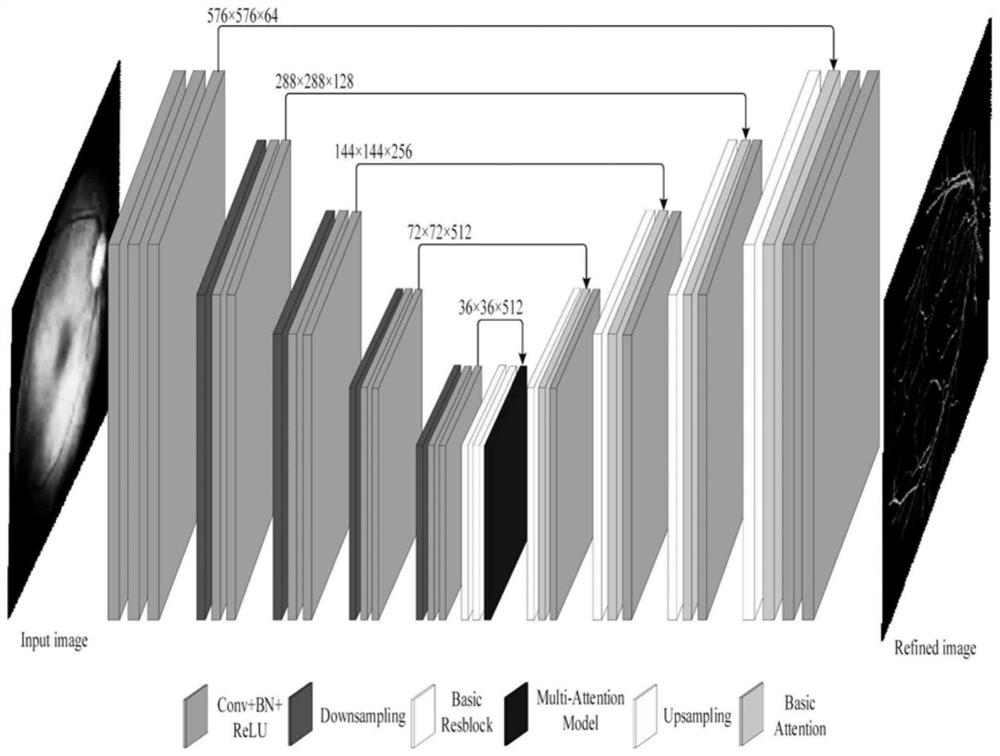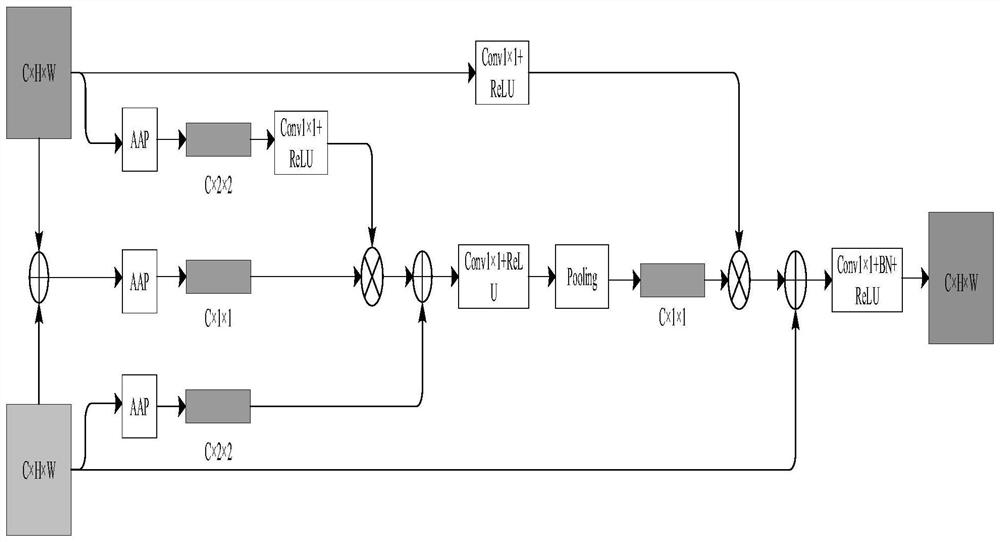Eye fundus image retinal vessel segmentation method based on mixed attention mechanism
A technology for retinal blood vessels and fundus images, applied in the field of image processing, can solve problems such as low precision, time-consuming pixel-level methods, and complicated operations, and achieve strong robustness
- Summary
- Abstract
- Description
- Claims
- Application Information
AI Technical Summary
Problems solved by technology
Method used
Image
Examples
Embodiment 1
[0036] This embodiment provides a method for segmenting retinal blood vessels in fundus images with a mixed attention mechanism, such as figure 1 , including the following steps:
[0037] S1: Obtain the retinal fundus image, and divide the retinal image into a training set and a test set;
[0038] S2: Construct a mixed attention convolutional neural network, which is used to segment retinal blood vessels in retinal fundus images;
[0039] S3: using the training set to train the mixed attention convolutional neural network, and using the test set to test the mixed attention convolutional neural network to obtain a trained mixed attention convolutional neural network;
[0040]S4: Input the retinal image to be segmented into the trained mixed attention convolutional neural network, and the mixed attentional convolutional neural network outputs the retinal image blood vessel segmentation result, and the retinal image to be segmented can be obtained through the fundus stereo camer...
PUM
 Login to View More
Login to View More Abstract
Description
Claims
Application Information
 Login to View More
Login to View More - R&D
- Intellectual Property
- Life Sciences
- Materials
- Tech Scout
- Unparalleled Data Quality
- Higher Quality Content
- 60% Fewer Hallucinations
Browse by: Latest US Patents, China's latest patents, Technical Efficacy Thesaurus, Application Domain, Technology Topic, Popular Technical Reports.
© 2025 PatSnap. All rights reserved.Legal|Privacy policy|Modern Slavery Act Transparency Statement|Sitemap|About US| Contact US: help@patsnap.com



